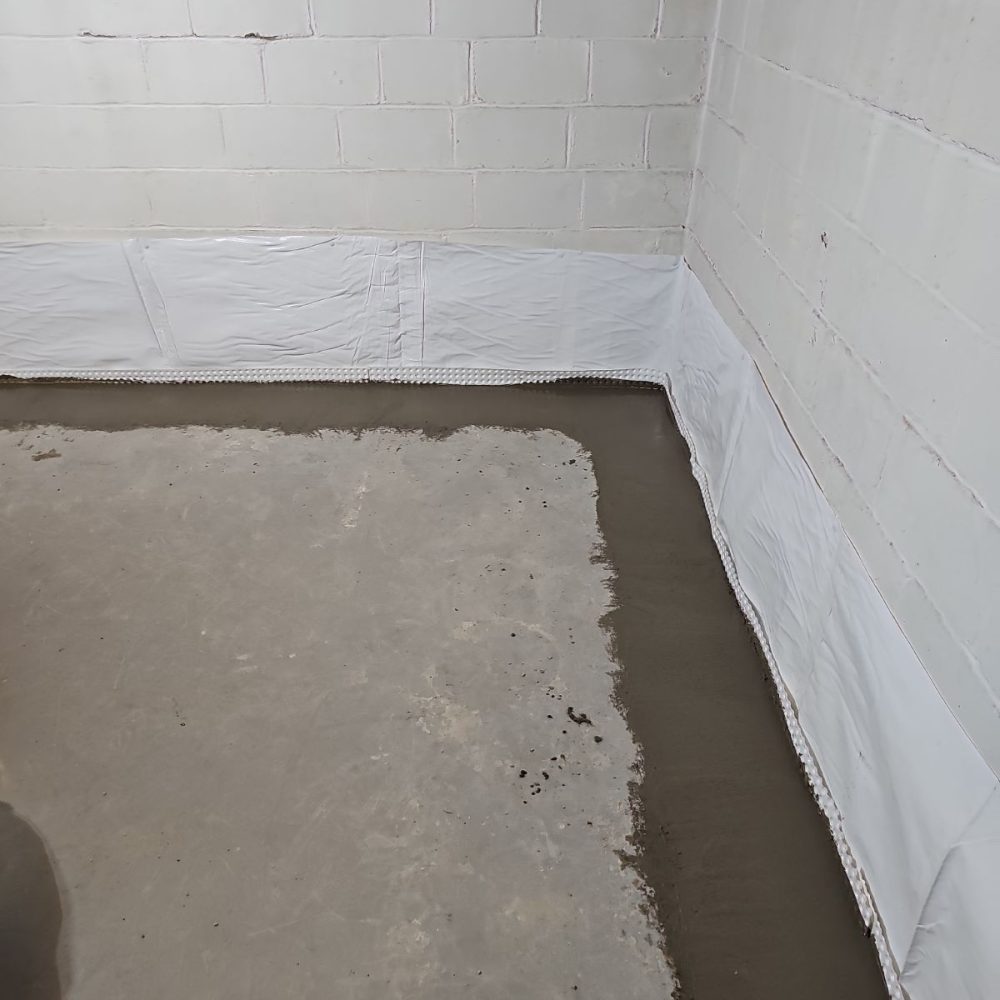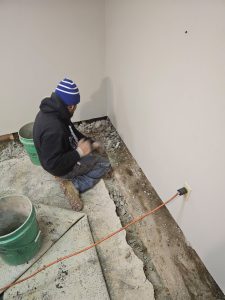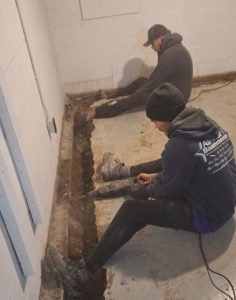
Imagine you’re walking down into your basement, only to be greeted by a musty smell. It’s not too surprising; basements are known for their dampness and lack of ventilation. But what if that musty odor is more than just a characteristic of a basement? What if it’s a sign of lurking problems like mold, mildew, or water leaks? Don’t panic, there’s a lot you can do to tackle this problem. Stick around as we explore some effective strategies to not only rid your basement of the musty smell but also to prevent it from returning in the future.
Understanding the Musty Smell
 The essence of mustiness is an unwelcome guest in many basements. Yet, it’s not just a mere smell you can dismiss. It’s a telltale sign of potential issues that you need to address.
The essence of mustiness is an unwelcome guest in many basements. Yet, it’s not just a mere smell you can dismiss. It’s a telltale sign of potential issues that you need to address.
First, understand what causes the musty odor. It’s usually the result of mold or mildew, microscopic fungi that thrive in damp, dark, and poorly ventilated environments – just like your basement. These fungi release gases called microbial volatile organic compounds (MVOCs). When you’re detecting a musty smell, you’re actually sniffing these MVOCs.
It’s vital to take this seriously. While some types of mold and mildew are harmless, others can pose health risks, especially for those with allergies, asthma, or other respiratory conditions. Prolonged exposure may lead to symptoms like coughing, wheezing, and nasal stuffiness.
Don’t simply cover up the smell with air fresheners or other temporary solutions. That’s like putting a band-aid on a bullet wound. You’re not solving the root problem.
The mustiness is your basement’s cry for help. Answer it by taking the necessary steps for a longer-term solution.
Investigate for Water Leaks
As you move forward in tackling your musty basement issue, it’s essential to scrutinize for potential water leaks.
Addressing visible water damage as soon as it’s spotted can prevent further deterioration.
Identifying Potential Leak Sources
Your basement’s persistent musty smell could be a sign of lurking water leaks. Identifying potential sources of these leaks is an essential step you mustn’t overlook. A thorough investigation can help you target the problem at its root and save you from costly repairs down the line.
Start by checking your basement’s walls and floors for signs of moisture. Look for damp spots, discoloration, or peeling paint. These areas can indicate the presence of a hidden water leak.
But don’t stop there, as pipes hidden behind walls or ceilings could also be the culprits. If you notice any unusual bulging or staining, it’s time to call in a professional.
Next, examine your home’s exterior. Faulty gutters and downspouts can often lead to basement leaks. Make sure they’re not clogged and are directing water away from your home’s foundation.
Also, assess the slope of your yard. If it’s directing water towards your house, you may have found your leak source.
Handling Visible Water Damage
Once you’ve pinpointed potential sources of leakage, it’s time to roll up your sleeves and tackle any visible water damage.
Begin by drying out the area. You can use a wet/dry vacuum to extract standing water, then a dehumidifier or fans to remove excess moisture.
Once dry, inspect areas for mold, mildew, or discoloration. These can indicate long-term water damage. If present, you’ll need to clean the area thoroughly with a bleach solution, allowing it to dry completely.
However, remember that bleach doesn’t penetrate porous materials, so you may need a specific mold-control product.
Now, assess the structural damage. Crumbling drywall, warped floorboards, or peeling paint are signs of serious water damage. In these cases, removal and replacement may be necessary.
Exercise caution doing this yourself, as damaged materials can be hazardous.
Importance of Professional Inspection
While addressing visible water damage is a step in the right direction, it’s equally important to contemplate a professional inspection. You might think you’ve handled the problem, but there could be unseen issues lurking beneath the surface.
Water leaks can lead to structural damage if left untreated, affecting the integrity of your home.
Hiring a professional inspector will guarantee that every inch of your basement gets checked for potential problems. They’re trained to spot signs of water leaks that you might miss, like subtle discolorations or dampness in unexpected places.
These experts can even identify potential risks that might lead to future problems.
Moreover, a professional inspection provides you with a thorough report detailing the condition of your basement. This document doesn’t just act as a guide for any required repairs but can also be helpful for insurance claims or if you plan to sell your house in the future.
Check for Mold and Mildew
Next, you’ll need to carefully check for mold and mildew, telltale signs of a persistent dampness problem.
It’s crucial to correctly identify the presence of these unhealthy fungi because they can pose serious health risks if left unchecked.
In the following sections, we’ll guide you through the process of mold detection and explore effective techniques for mildew removal.
Identifying Mold Presence
Have you ever noticed a strange smell in your basement? That musty odor you’re detecting might be more than just dampness; it could be a sign of mold presence. Identifying mold is an essential step in addressing that unpleasant basement smell.
Firstly, look around. Mold often appears as black, green, or white spots on walls, ceilings, or objects. It can also hide behind wallpaper, under carpets, or inside walls.
Don’t just trust your eyes, though. Your nose can also be a guide. Mold emits a distinct, musty odor.
Secondly, consider the conditions. Mold thrives in damp, dark, and warm environments. If your basement is humid or has suffered water damage, it’s more susceptible to mold growth.
Lastly, you might want to invest in a mold test kit. These kits, available at local home improvement stores or online, can detect mold spores in your home.
They aren’t always necessary, but they can provide peace of mind.
Mildew Removal Techniques
After identifying mold, your next mission is the eradication of mildew, that stubborn cousin of mold often found in damp basements.
You’re going to need a few tools: a scrub brush, mildew cleaner or a homemade solution of one part bleach to three parts water, and protective gear such as gloves and a face mask.
Start by applying the cleaner or homemade solution generously to the affected area. Don’t be stingy – mildew is a tough opponent. Let it sit for about fifteen minutes. This gives the solution time to seep into the mildew and break it down.
Next, take your scrub brush and go to town. Scrub vigorously but be mindful not to damage the underlying surface. Mildew clings tightly to surfaces but with enough elbow grease, it will start to lift off.
Identifying Pest Infestations
Ever wondered how to identify a pest infestation in your musty basement? The first step is to know what you’re looking for. Pests often leave behind signs of their presence, such as droppings, gnawed items, and even distinctive smells.
Rodents, for instance, may leave tiny droppings and damaged wires or insulation. Insects, on the other hand, could leave behind shed skins, egg cases, or even visible trails.
Don’t overlook the significance of sounds, too. You might hear scratching, scurrying, or even squeaking noises, particularly at night when many pests are most active.
If you’re dealing with larger pests like raccoons or squirrels, you might spot signs of nesting or hear their movements.
Visual clues are also crucial. See any unusual holes or cracks in your walls, floors, or foundations? Pests often use these as entry points.
If you notice these signs, it’s time to take action.
Ventilation and Air Circulation
While you may not always acknowledge it, proper ventilation and air circulation in your basement can play a critical role in combating mustiness. Without it, dampness can build up, leading to the growth of mold and mildew which are primary contributors to that unpleasant smell.
So, what can you do to improve the air flow? Start by checking your existing vents. Verify they’re not blocked and that they lead to the outside to promote airflow.
If your basement doesn’t have vents, think about installing them. They can greatly contribute to reducing the dampness by allowing fresh air to circulate.
Don’t overlook your windows either. If it’s safe and feasible, open them regularly to let fresh air in.
If your windows are small or non-existent, you might want to think about enlarging them or installing new ones.
Utilizing Dehumidifiers
In the quest to banish basement mustiness, employing a dehumidifier can be a game-changer. This device works by sucking in air from your environment, removing the moisture, and then releasing it back. By doing so, it lowers the humidity levels, making conditions less favorable for the growth of mold and mildew – primary contributors to that musty smell.
When shopping for a dehumidifier, consider the size of your basement. Larger spaces need more powerful units. You’ll also want to look for a model with a built-in hygrometer, which measures humidity levels, ensuring you’re not over-drying the air.
Once you’ve got your dehumidifier, placement is key. Position it away from walls and furniture for maximum air circulation.
Additionally, remember it’s not a set-it-and-forget-it solution. Regular maintenance, including cleaning and emptying the collection bucket, is essential to keep it functioning effectively.
While a dehumidifier can make a significant difference, it’s not a stand-alone solution. Combined with good air circulation and careful attention to other moisture sources, you’ll be well on your way to a fresher, less musty basement.
Cleaning and Deodorizing Methods
Tackling the musty odor in your basement goes beyond regulating humidity; it demands a thorough cleaning and deodorizing regimen.
Start by removing any mold or mildew present. Use a solution of one part bleach to four parts water to scrub all affected areas. Don’t forget to wear protective gloves and a mask to protect yourself from the harsh fumes. Rinse the cleaned areas with warm water and let them dry thoroughly.
Next, it’s time to deodorize. Ventilate the basement well so that fresh air can circulate and help remove the musty smell.
Then, consider using activated charcoal or baking soda. These substances are great at absorbing odors. Simply place them in various locations around your basement and leave them for several days. You’ll be amazed at the difference they make.
Lastly, use a disinfectant to kill any remaining bacteria or mold spores. This step is essential to prevent the musty smell from returning. A solution of vinegar and water is a safe, natural disinfectant that’s effective against most common bacteria and fungi.
Professional Cleaning Services
Despite your best cleaning and deodorizing efforts, sometimes a stubborn musty smell may persist or the task proves too challenging. At this point, you may want to contemplate bringing in professional cleaning services. These experts have advanced tools and techniques to tackle even the most stubborn odors.
Professional services have access to commercial-grade cleaning and deodorizing agents that can penetrate deeper into the materials in your basement. These professionals are trained to identify the root cause of the musty smell and effectively treat it. Whether it’s mold, mildew, or a hidden leak, they’ve the expertise to handle it.
In addition, these services can do a thorough cleaning of your basement, reaching areas you may have missed. They can clean and treat carpets, upholstery, and other soft materials that could be harboring the musty smell. They’ll also disinfect surfaces, eliminating bacteria and other microorganisms that could be contributing to the odor.
Hiring a professional service might be more costly upfront, but it could save you significant time and effort. Plus, it’s likely to be more effective in completely eradicating the musty smell from your basement. So, it’s an option worth contemplating if your own efforts have fallen short.
Preventive Measures for the Future
Moving forward, it’s important to put preventative measures in place to keep your basement fresh and free of musty smells. Here are some steps you can take.
Firstly, guarantee proper ventilation. It’s vital to keep the air in your basement circulating to prevent moisture buildup. Install exhaust fans if necessary and open windows whenever possible.
Secondly, invest in a quality dehumidifier. This device reduces humidity levels, making your basement less hospitable to mold and mildew. It’s worth noting that you’ll need to regularly empty the dehumidifier’s water reservoir to maintain its effectiveness.
A waterproofing sealant can also be beneficial. Apply it to your basement walls and floor to prevent water seepage. Remember, moisture is the main culprit behind that musty smell.
Also, don’t overlook the significance of regular cleaning. Dust and dirt can contribute to musty odors. Make it a habit to sweep or vacuum your basement, and occasionally deep clean with a mild detergent.
Lastly, keep your basement well-lit. Mold and mildew thrive in dark, damp places. A well-lit basement is less likely to have these issues.
To sum up, don’t get overwhelmed if your basement smells musty. Focus on the root causes, like mold or water leaks, and tackle them head-on. Boost ventilation, use dehumidifiers, and keep the area clean. If needed, don’t hesitate to call professionals. Remember, prevention is key, so regular maintenance and checks can beat any musty smells before they even start. It’s a juxtaposition of effort and reward, but your fresh, clean basement will be worth it.

All-Star Basements is Locally Owned and Operated and based out of Rochester, Minnesota. We cover Southern Minnesota including the Twin Cities area, Western Wisconsin and parts of Northeast Iowa. Our team is committed to solving our customers’ basement waterproofing, foundation repair, or crawl space needs and offering multiple solutions to choose from.
As a proud member of the Basement Health Association and the National Waterproof Members of America, we have the best products available to solve your leaky basement, seepage, or flooding issues. Our lineup also includes multiple crawl space solutions.
If you have foundation problems that need any kind of repair, we can help! We feature the nationally renowned Grip-Tite Foundation Systems, which has a long history over 90 years of fixing homeowners’ foundation repair issues- from walls that are buckled, tipping or cracked and bowing.
At All-Star Basements, we are committed to providing multiple solutions to choose from to help fix any basement problem you may have. We are very proud of our Better Business Bureau A+ rating and take great pride in caring for all of our customers’ needs- big or small, we do it all!